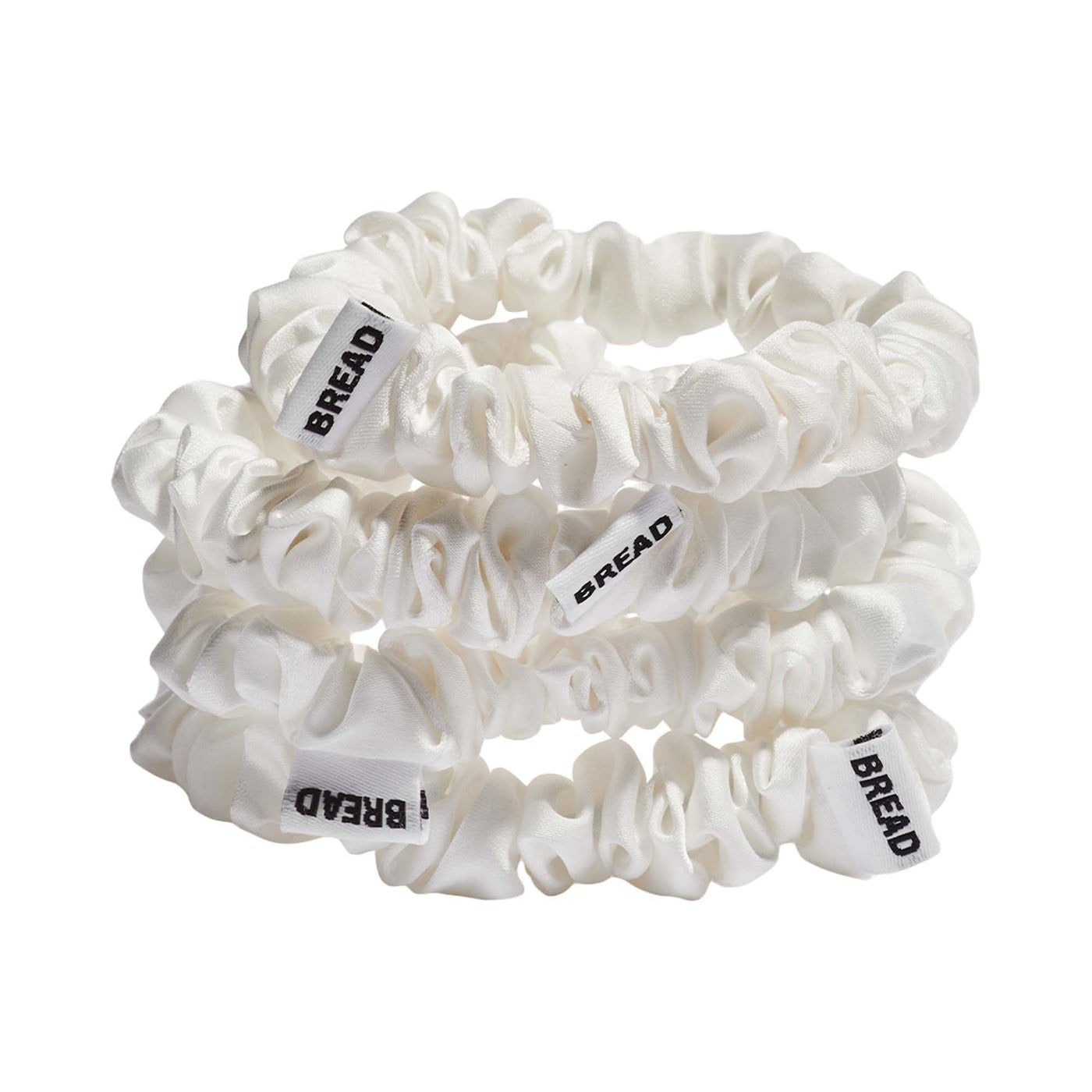All linked products are independently selected by our editors. If you purchase any of these products, we may earn a commission.
Last year I made a pact with myself: I wouldn’t cut my hair for a full 12 months in what I came to call a “scientific strike”. Don't get me wrong. As a beauty writer, I’ve always advised regular trims to keep your hair healthy and strong, but following a handful of salon appointments with scissor-happy hairstylists, the longest hair I’d ever managed to grow was steadily reduced to a long bob.
My hair went from being 20 inches long to a shoulder-skimming 12 inches in the space of a year — and I saw red. I know what you’re thinking. It’s just hair. It grows back, right? But here’s the thing: I’ve been trying to grow long hair my entire life, and rarely has it passed my shoulders. Growing up as a mixed-race girl in a small, all-white town, my desperation for long hair was tied to belonging and so many other complex feelings. I knew I’d never have swishy blonde lengths, blue eyes, or pale skin like my friends. But long hair felt like an achievable way to feel less alien.
AdvertisementADVERTISEMENT
I’d like to say that beauty standards have changed over the years, but society still puts long hair on a pedestal as the feminine ideal. As such, my desire for flowing locks outlasted childhood insecurities. While I fixated less on length in my 20s, eventually coming to terms with my hair’s limits, a rare occasion where I straightened my hair revealed a dramatic growth spurt. I saw myself with long hair for the first time, and I cried.
That’s why I was so upset when it was gone. It might sound melodramatic, but the reality is that many of us have deeply emotional relationships with our hair. Every time I hear of a hairdresser taking off more than agreed, I understand the frustration. A quick whip round my friends and colleagues proves that no matter how clear they are with their hairdressers, they almost always leave the salon with much less hair than intended. (The phrase “hairdresser’s inch” exists for a reason.)
So I decided to take a stand. No scissors were to touch my hair in 2024. Not only that, but I vowed to find out if regular trims actually encourage our hair to grow in the long run and whether my suspicions were correct: Hairdressers really do take off more than you need.
Do regular trims really help your hair grow?
While trims don’t directly impact actual hair growth from the scalp, they do affect the overall length by improving retention, essentially maintaining a relatively steady length. Sam Burnett, owner and creative director of Hare & Bone salon, also tells me, “Trimming prevents split ends from traveling up the hair shaft, which can lead to breakage.” If your hair is breaking off at the ends or the mid-lengths, then you’re going to lose length, which can counter growth. It all adds up, but seeing as my regular trims had drastically shortened my hair, there had to be an issue with the frequency or the amount snipped. More on that later.
AdvertisementADVERTISEMENT
Is it okay to skip trims and haircuts if your hair is damaged?
Burnett warns that skipping trims can lead to a “domino effect” of damage, meaning you might need a more drastic cut further down the line. But knowing you should chop off the split ends doesn’t make it any easier. Where there’s an unpersuadable attachment to length, curl specialist Trina Baranyi proposes a compromise. “It’s fine if you're not prepared to lose all that damage,” she said — but at least meet your stylist in the middle. “Let's work together,” she added. “I’ll put you on a plan, but what I am going to need from you is consistency.” Such a plan involves coming in for more frequent (and therefore less dramatic) cuts over time to gradually remove damage and help prevent it from spreading up the hair shaft. Until the damage is eventually removed, Baranyi also advises against bleach and recommends minimal heat styling.
If you’re looking to take off damage while preserving length, hair dusting has become a popular technique among hairstylists. Performed on dry hair so that split ends are visible, it involves taking hair section by section and carefully snipping off — or “dusting” — any split ends that stick out from the mid-lengths down to the ends. While hair dusting is mostly suited to straight hair, it’s not impossible on curly hair with the right expertise. A qualified hairdresser will talk you through the process and explain whether it’s right for you.
AdvertisementADVERTISEMENT
How often should you get a trim if you want to grow your hair?
How often you need a trim can depend on your hair type. For those with fine hair, Burnett recommends a snip every four to six weeks as split ends tend to be more obvious. For thick or curly hair, you can push it to every eight to 12 weeks. When it comes to textured hair, Baranyi suggests a trim every 12 weeks for loose curls and every 16 to 20 weeks for tighter textures, mainly because it’s harder to see growth.
Following my experiment, some of these recommendations seemed excessive. Sure, my hair was in need of a trim (it was uneven with split ends), but the condition wasn’t drastically worse than usual. If it hits 12 weeks and your ends look fine to you, I personally think it’s a good idea to use your initiative, and that might mean waiting a little. It seems Burnett agrees. “Ultimately, it’s about listening to what your hair needs,” he told me. If you notice that your hair is breaking off in places, for example, or it feels very dry, you're overdue a trim.
What causes slow hair growth?
I’d had my previous trims around the 20-week mark, which is frequent enough for my hair texture. Something still wasn’t adding up, though. I asked a trichologist to tell me more about what might cause slow hair growth.
The speed at which hair grows varies from person to person and throughout our lives, said consultant trichologist Eva Proudman of UK Hair Consultants. While growth can be impacted by nutrition, wellbeing, and health (such as an underactive thyroid, poor diet, or low levels of vitamins and minerals like ferritin, B12, vitamin D, and zinc), your baseline is mostly genetic.
AdvertisementADVERTISEMENT
“Hair growth is determined by the length of the growing cycle, which can last two to seven years,” Proudman continued. During this time, your hair goes through various stages: anagen (the growth phase), catagen (where hair growth slows down slightly), telogen (where hair doesn’t tend to grow for a few months) and exogen (where new strands grow, replacing old ones that have fallen out naturally). Proudman added that the hair growth rate is between 0.5 and 1 centimeter per month. Growing your hair long could take up to five years, said Proudman.
To further encourage growth, Proudman said that good hair care is essential. “The longer and older the hair, the more it is prone to damage,” said Proudman, “so a good shampoo and conditioner are a must.” Proudman also suggested dialling down the heat on hairdryers and straighteners (happily, lots are now capped at 180°C) to avoid damage. Lastly, washing your hair regularly will keep your scalp healthy and well-balanced, said Proudman. And a happy scalp equals healthier hair.
Why do some hairdressers take off more than you ask?
Suppose you’re taking good care of your hair, but your hairdresser is still cutting off more than you’ve agreed. It can be an accident,t but Baranyi said that sometimes it can be deliberate. “Some hairdressers don't listen,” she told me. “They think, I know best.” While Baranyi advises clients on what needs to come off and explains that they might not get the exact results that they want, ultimately, she only cuts what they agree on. “It's horrible for you to sit in my chair, trust me, and then for me to go, Oh, f*ck it. I'm doing it anyway.”
AdvertisementADVERTISEMENT
Hearing this from Baranyi is vindicating. If you feel as though you aren't being listened to, it might be time to find another hairdresser. I’d recommend reading as many reviews as you can, and asking your friends and family who they trust to do their hair. I had a great experience at London’s Hare & Bone, where the stylist listened to my request to compromise some damage to maintain length. We discussed my self-imposed heat ban (not using heated tools more than six times a year) and my strict use of silk pillowcases and scrunchies, which he said were great steps to protect damaged hair from getting worse. For these reasons, he was happy to leave a little damage. It’s also recommended to book a consultation (usually free) before your actual haircut. If you feel like you aren’t being heard, it’s okay to walk away.
With all this in mind, I have another theory as to why my stylists were cutting so much of my hair off. Curly cuts don’t tend to translate well when straightened, so as I wear my hair both ways, it made more sense to have it cut when straight. This meant I didn’t feel the need to seek out texture-experienced stylists. Also, curly hair requires more moisture, so when I’d say, “Take off what needs to come off,” were stylists seeing the naturally drier texture of my straightened curls as hair damage?
Baranyi, who also has curly hair, justified my suspicion. “We naturally just have a drier texture on the ends of our hair,” she told me. She has witnessed stylists perceive healthy curly hair as dry. “It's not damaged and it's not broken,” she added. “It's because [lots of stylists] are used to feeling a silky, smooth texture, [especially if they are] not working with curls often.”
AdvertisementADVERTISEMENT
What I learned from a year of no haircuts
I want to say that my hair is sailing down my back again after a year of no cuts, but actually the growth has been moderate. Taking a leaf out of the experts’ book, I’ve decided to return to 20-week trims in 2025 so that my hair remains healthy and strong.
Choosing stylists who weren’t experienced enough to work with my texture is probably most crucial to understanding why I struggled to grow my hair. If I’ve learned anything from this experiment, it’s that it’s so important to find a hairdresser who respects your wishes and understands your texture.
Funnily enough, I didn’t need to stop cutting my hair for a year to figure that out. Maybe I just needed 12 months to cool off before I faced the scissors again.
AdvertisementADVERTISEMENT












